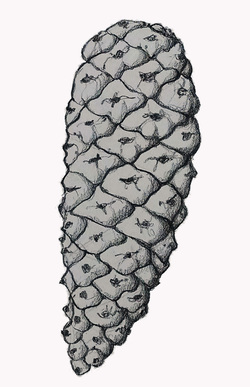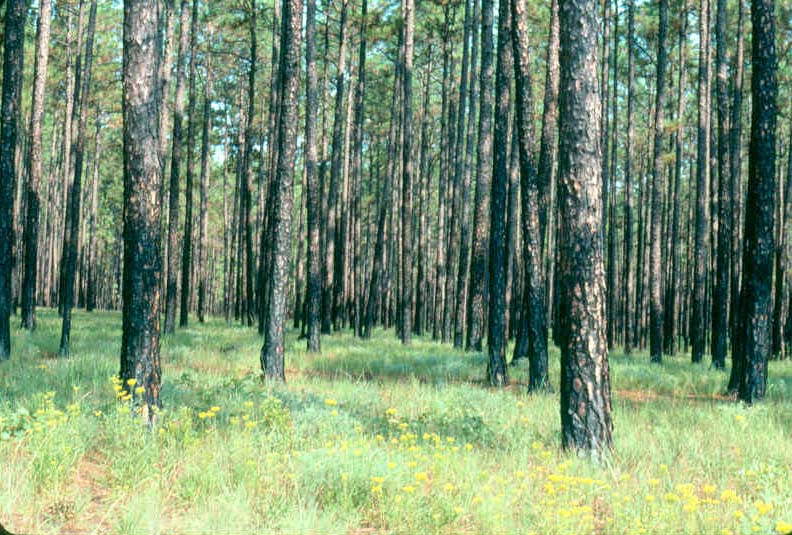
I’ve learned through experience that the type of spiralling pattern seen on pine cones follows the Fibonacci number sequence. For a fun, snappy 5-minute video on this topic, see Vi Hart’s Youtube episode “Doodling in Math: Spirals, Fibonacci, and Being a Plant [1 of 3]”:
https://www.youtube.com/watch?v=ahXIMUkSXX0
Longleaf pines have an interesting connection to fire and the practice of controlled burning. Since longleaf pine trees have a significant ability to survive fire at certain life stages (as seedlings, and then later when the trees have developed thick bark), this kind of tree will become relatively more abundant after a fire. Periodic burning in longleaf pine habitat can create an open type of forest in which mature, tall longleaf pines form the upper canopy, with an open, grassy understory that harbors lots of biodiversity in terms of both plant and animal species. This was the forest that Native Americans promoted over a number of centuries through the use of controlled burning, and later colonial settlers in our region continued the practice. There are very few of these mature longleaf pine forests left, for various reasons including commercial emphasis on faster-growing pine species, reluctance to employ controlled burning, and encroaching development.
Longleaf%20Pine/longleafpine.htm
Find out more about visiting the Phinizy Swamp:http://naturalsciencesacademy.org/

 RSS Feed
RSS Feed